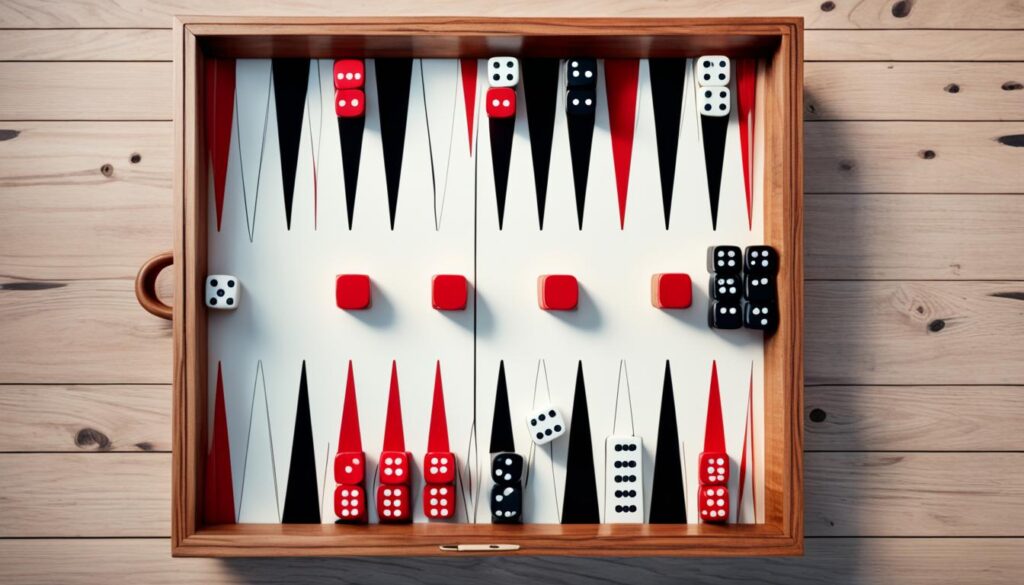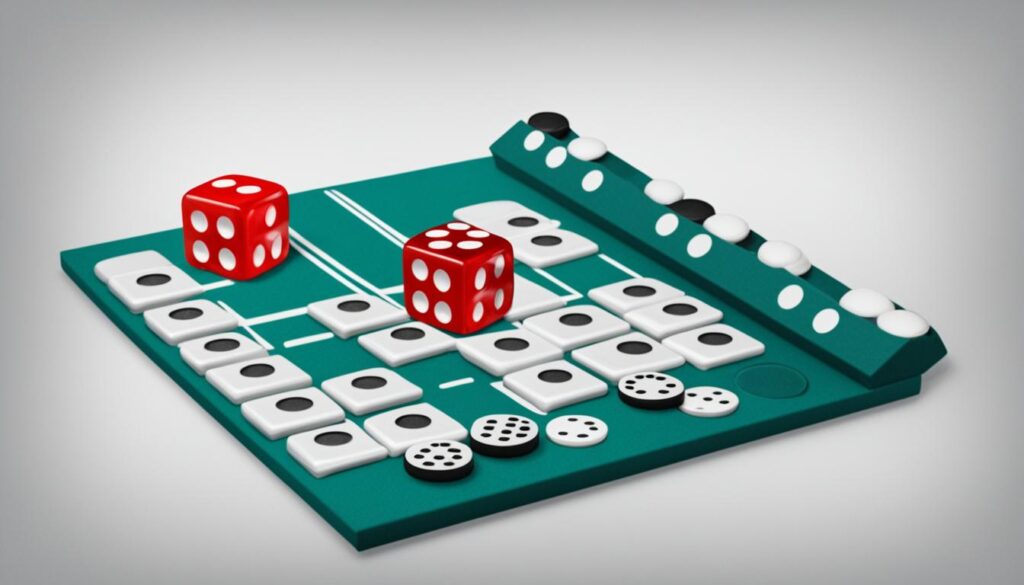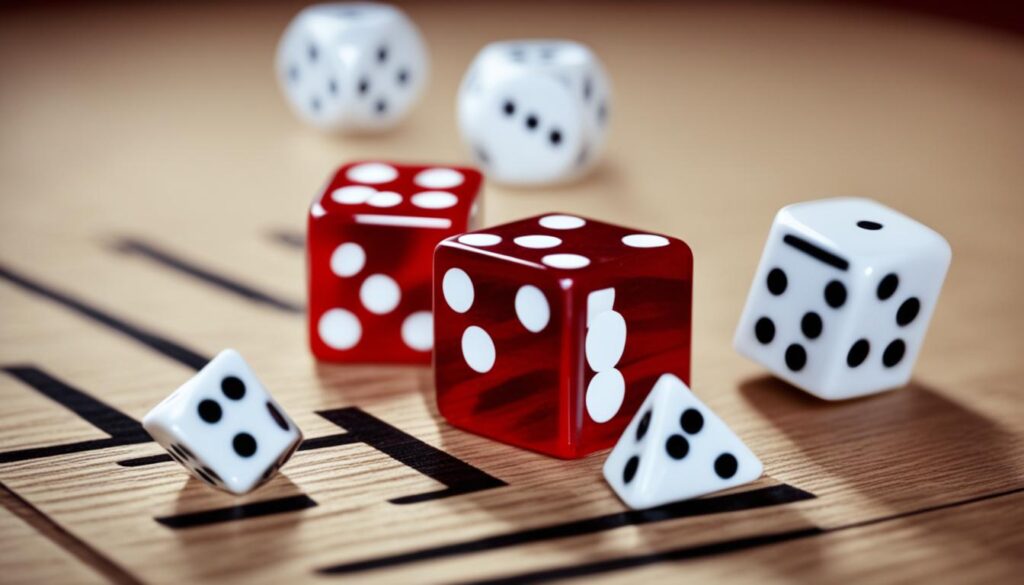
Backgammon is a classic board game that has been played for centuries. At the heart of the game is the gambling dice, which determines the moves and strategies employed by the players. This article will explore how the backgammon dice work, delving into the mechanics, probabilities, and strategies that govern this integral component of the game.
The backgammon dice play a crucial role in the game, as they introduce an element of chance and probability that can significantly impact the outcome of a match. Understanding the backgammon dice rules and backgammon dice rolls is essential for players to develop effective backgammon dice strategy and increase their chances of winning.
In this article, we will explore the backgammon dice mechanics, the backgammon dice patterns, and the various backgammon dice variations that have been introduced over the years. We will also delve into the backgammon dice probabilities and backgammon dice odds to help players optimize their gameplay and leverage the gambling aspect of the game.
Introduction to Backgammon Dice
At the heart of the captivating game of backgammon lies the crucial role of the gambling dice. These two standard six-sided dice are the driving force behind the movement and strategies employed by players as they navigate the board. Understanding the basics and significance of the backgammon dice is essential for any enthusiast looking to master this time-honored game.
Understanding the Basics
In backgammon, the players take turns rolling the dice, with the resulting numbers dictating how they can move their game pieces, known as checkers, around the board. The combination of the two dice offers a wide range of possibilities, from the lowest roll of 2 to the highest of 12, including the coveted doubles (2-2, 3-3, 4-4, 5-5, and 6-6).
Significance of Dice in Backgammon
The backgammon dice play a crucial role in the game, as they introduce an element of chance and probability that can significantly impact the outcome of a match. The ability to strategically manage and leverage the dice rolls is a fundamental aspect of successful backgammon gameplay. Understanding the dice mechanics, probabilities, and potential outcomes is essential for players to develop effective strategies, mitigate risks, and increase their chances of emerging victorious.
The Mechanics of Backgammon Dice
The backgammon dice are typically made of standard cubic dice, similar to those used in other tabletop games. However, the design and construction of these dice can vary, with some featuring specialized markings or materials to enhance their appearance or gameplay experience. Regardless of their design, the key to the dice’s functionality in backgammon is their ability to generate random, unbiased results.
Construction and Design
The backgammon dice patterns and variations in their construction can range from simple, classic designs to more elaborate and visually striking options. Some dice may feature intricate engravings, specialized coloring, or even unique shapes and materials to cater to the preferences of different players and game enthusiasts.
Randomization Techniques
To ensure fairness and unpredictability, the backgammon dice mechanics rely on various randomization techniques. This can include the use of precision-engineered cubes, specialized manufacturing processes, and rigorous quality control measures to maintain the integrity of the dice and prevent any biases or patterns from emerging.
Fair Play and Dice Monitoring
In professional and competitive backgammon settings, the dice are often closely monitored to uphold the principles of fair play. This may include the use of specialized dice cups, regular inspections, and even the implementation of electronic or automated systems to ensure the randomness and fairness of the dice rolls throughout the game.
Dice Rolls and Probability
The heart of backgammon revolves around the dice rolls, which dictate the movement and strategy of the game. Each roll of the two six-sided backgammon dice can result in 11 different outcomes: 2, 3, 4, 5, 6, 8, 9, 10, 11, 12, and doubles (2-2, 3-3, 4-4, 5-5, and 6-6). Understanding the possible backgammon dice roll combinations and their associated probabilities is crucial for players to develop effective game plans and anticipate their opponent’s moves.
Possible Dice Combinations
The backgammon dice rolls that can occur during a game are the result of the two dice being rolled simultaneously. Each die can display a value from 1 to 6, leading to a total of 11 possible outcomes when the two dice are combined. From a 2 (1-1) to a 12 (6-6), including the various double rolls, players must strategize their moves based on the dice results.
Calculating Odds and Probabilities
Analyzing the backgammon dice odds and probabilities is essential for formulating effective game plans and anticipating potential outcomes. Each dice roll combination has a unique probability of occurring, ranging from the most common 7 (1-6, 6-1) to the less frequent double rolls. By understanding the likelihood of specific backgammon dice rolls, players can make informed decisions, set up advantageous board positions, and seize opportunities to gain an edge over their opponents.

How Does the Gambling Dice Work in Backgammon?
The gambling aspect of backgammon is closely tied to the role of the dice. Players must strategically manage their backgammon dice rolls and positioning to gain an advantage over their opponents. This can involve tactics such as building effective board positions, blocking or trapping the opponent’s pieces, and leveraging the doubling cube to increase the stakes and potential payouts.
Dice Roll Strategies
Successful backgammon dice strategy involves anticipating and capitalizing on the probabilities of various dice roll combinations. Players must analyze the current board state, consider their potential moves, and make calculated decisions to maximize the impact of their dice rolls. This may include setting up blots (single-point positions) to be hit, creating blocking formations, or maneuvering pieces to secure key positions on the board.
Dice Management and Positioning
Backgammon dice management is crucial in determining the flow and tempo of the game. Players must carefully consider the placement of their pieces, ensuring they are in advantageous positions to capitalize on favorable dice rolls. This may involve strategically leaving openings for the opponent to make undesirable moves or maintaining control over key areas of the board.
Doubling Cube and Dice Dynamics
The backgammon doubling cube adds an additional layer of complexity and risk-reward dynamics to the game. Players can use the doubling cube to increase the stakes, potentially multiplying their winnings or losses. Effective backgammon dice strategy involves leveraging the doubling cube to create advantageous situations, such as forcing the opponent to make difficult decisions or pressuring them to take on greater risks.

Variations and Alternatives
While the standard six-sided dice are the most common and widely used in backgammon, there are various backgammon dice variations that have been introduced over the years. Some players and competitions may use precision backgammon dice or specialized dice sets to enhance the gaming experience or accommodate specific rule sets or preferences.
Precision Dice and High-Stakes Games
For high-stakes backgammon tournaments and competitions, some players may opt for precision backgammon dice that are meticulously crafted to ensure a fair and consistent rolling experience. These specialized dice, often made with materials like ivory or metal, are designed to minimize any inherent biases or imperfections, offering a more precise and reliable gameplay.
Online and Digital Adaptations
In the digital age, backgammon has evolved to include online backgammon dice and virtual adaptations of the classic game. These digital versions often incorporate randomization algorithms and digital dice that closely mimic the experience of physical dice, while also offering additional features and gameplay options for players to explore.
Conclusion
The gambling dice are a fundamental component of the backgammon game, determining the moves and strategies employed by players. By understanding the mechanics, probabilities, and variations of the dice, backgammon enthusiasts can develop more effective gameplay, leverage the element of chance, and enhance their overall enjoyment and competitiveness in this timeless board game.
From the construction and design of the dice, to the randomization techniques that ensure fair play, the role of the gambling dice in backgammon is multi-faceted. Exploring the possible dice roll combinations and their corresponding probabilities allows players to make informed decisions and better anticipate the outcomes of their moves.
Ultimately, the how does the gambling dice work in backgammon is a crucial aspect of the game that requires a comprehensive understanding. By mastering the dice mechanics and integrating strategic dice management into their gameplay, backgammon players can elevate their skills, outmaneuver their opponents, and ultimately emerge victorious in this captivating and timeless board game.
